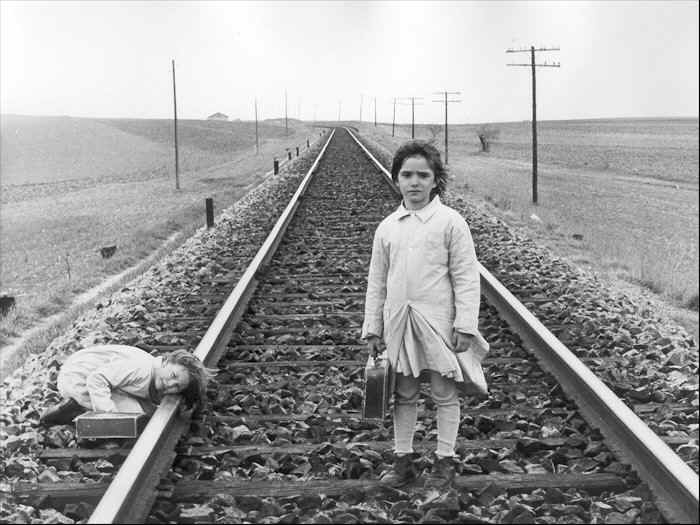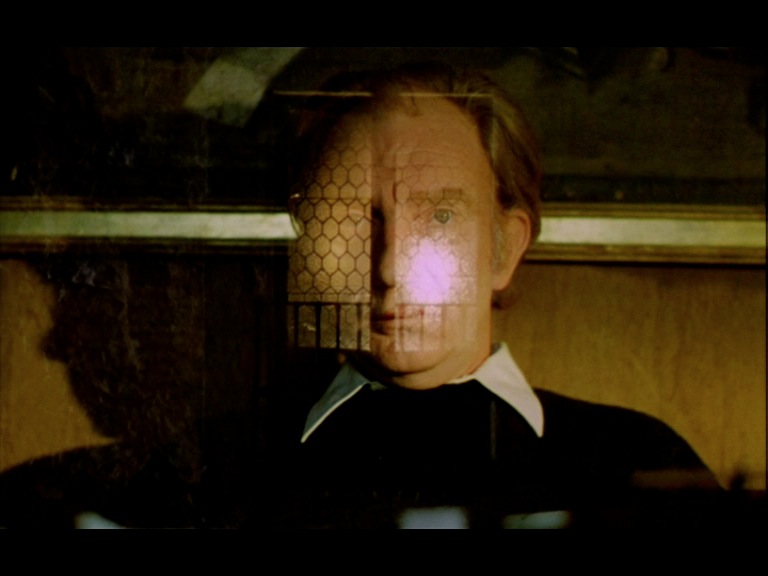 Who could ever draw the lines that would separate the material world and the worlds of the imagination? For children, these worlds flow into each other very easily: a merging that is the subject of the Spanish-language film El espÃritu de la colmena (1973). Victor Erice’s powerfully visual creation shows two sisters, six-year old Ana and the slightly older Isabel who go along to a local showing of Frankenstein in their village. Ana is captured by the image of the monster, whose friendship with the young girl on the screen makes her connect elements of her own psyche: her own family relationships, and the image of death. This is certainly a film about the power of cinema. Old and young, we see the community sit together in the darkened hall, eyes fixed on the moving images that reveal something deep and important about the world outside the doors: a world of war and struggle.
Who could ever draw the lines that would separate the material world and the worlds of the imagination? For children, these worlds flow into each other very easily: a merging that is the subject of the Spanish-language film El espÃritu de la colmena (1973). Victor Erice’s powerfully visual creation shows two sisters, six-year old Ana and the slightly older Isabel who go along to a local showing of Frankenstein in their village. Ana is captured by the image of the monster, whose friendship with the young girl on the screen makes her connect elements of her own psyche: her own family relationships, and the image of death. This is certainly a film about the power of cinema. Old and young, we see the community sit together in the darkened hall, eyes fixed on the moving images that reveal something deep and important about the world outside the doors: a world of war and struggle.
Later, we see Ana and Isabel’s father in his study at the top of their house, writing into the night about the bees that provide his occupation. Twice, we hear the words he writes:
“Someone to whom I recently showed my glass beehive,
with it’s movement like the main gear wheel of a clock-
Someone who saw the constant agitation of the honeycomb,
the mysterious, maddened commotion of the nurse bees over the nests,
the teeming bridges and stairways of wax, the invading spirals of the queen,
the endlessly varied and repetitive labors of the swarm,
the relentless yet ineffectual toil, the fevered comings and goings,
the call to sleep always ignored, undermining the next days work,
the final repose of death
far from a place that tolerates neither sickness nor tombs-
Someone who observed these things, after the initial astonishment had passed,
quickly looked away with an expression of indescribable sadness and horror.”
 He tunes into faint music on a crystal radio, and falls asleep surrounded by empty coffee cups and books. The camera pans back to the outside of the house, showing the yellow light of his study through hexagonal panes of glass, like a honeycomb. This film shows us the deep imaginative power in our family relationships: between father and daughter, as well as between sisters.
He tunes into faint music on a crystal radio, and falls asleep surrounded by empty coffee cups and books. The camera pans back to the outside of the house, showing the yellow light of his study through hexagonal panes of glass, like a honeycomb. This film shows us the deep imaginative power in our family relationships: between father and daughter, as well as between sisters.
The film moves towards a second epiphany for Ana to parallel the first – this time, in the countryside – a wild and mysterious landscape into which she runs away from her father. She picks a mushroom, and sees a vision: her version of the cinematic moment of connection that we witnessed as part of the community watching Frankenstein. So much is left open at the end of The Spirit of the Beehive. Like the open shutters to the window Ana stands by, silhouetted by a strange light and the sound of the distant train, I felt challenged by the beautiful images and poetry I’d seen. The connections were mine to make: between childhood memory, cinematic form and the relentless reflection of nature. In Erice’s creation, I recognise so many spirits.
PS: The influence of this film on del Toro’s Pan’s Labyrinth has been widely observed: another cinematic achievement, to my mind, of ‘magical realism’. From those of you who have seen that, I’d love to hear your impressions, too.
NEXT WEEK: We begin a series on David Lynch with the challenging and beautiful Lost Highway (1997). For a more extended schedule, check in here.

Alright, that’s it! I have been missing too many of these from that holidays to forgetting to put them in my Netflix queue. I’m putting Lost Highway in there now!
“Spirit” was the first foreign film I think I had ever seen–at least one which was purely subtitled. Guess where I saw it? BYU, freshman year, International Cinema. (http://ic.byu.edu/now.php).
I had already been a reader of Gabriel Garcia Marquez, for example, so magical realism was something I was familiar with, and it was a delightful film. So glad Spirit was my first foray into foreign film–if it had been some bizarre Russian thing I remember that same year, I don’t think I would have been so willing to go back.
Thoroughly enjoyed Pan, as well. Thanks for the nice memories!
Rachel, ‘Spirit of the Beehive’ is the perfectly-titled film for BYU! :)
At the same time, it’s really challenging: psychologically, and in terms of the dark interpretation of the ‘beehive’ that it offers… What are your thoughts on that?
I wonder what the Russian film was: Solaris?
Really enjoyed this film. The little girl who played Ana was amazing, her facial expressions, and the parts where the two sisters would whisper to each other just felt so real. I’m not normally someone who likes a more slow moving film, but there was so much to think about through the scenes that it really needed to be slow to enjoy it.
I’ll have to watch it on Netflix again–it’s on instant, I believe. It’s been years since I watched it last, so I’d need to refresh my memory on specifics before commenting.
No, the Russian movie was something else. I have no idea what–it was back in 1987!
Husband and daughter are going to a basketball game tonight–should I watch Beehive or my Indian movie, Mangal Padney? Decisions, decisions….
Beehive!